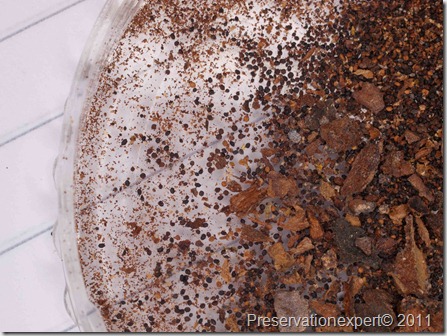Woodworm is a generic term and can mean any insect that leaves holes in wood. However, it is usually applied to the Common Furniture Beetle Anobium punctatum, which can cause serious structural damage. I’ve mentioned before that other species are commonly misdiagnoses as ‘woodworm’, sometimes with unnecessary anxiety and even wasted treatment costs.
Last week I was in a roof void in Horsforth, carrying out a pre-purchase timber survey for a client. The obvious infestation in some of the roof timbers had already been noted and I thought I’d pop something up on the blog for those who are not familiar with The Bark Borer Beetle Ernobius mollis.
This insect shares many of Common Furniture Beetle’s visual’s such as similar exit hole diameter and even the adults look similar.
Anyway, the video below tells the story and I’ve also taken a close-up macro shot of the frass for you.
Here’s the macro image I promised you. Note the pellets reflect the food – almost black through to buff colour.
I have come across treatment guarantees for work done in roof voids, where this was the only infestation, so it does pay to get diagnosis right. Any self respecting timber surveyor with CSRT will have had to demonstrate his ability to identify these common insect species, but there are many untrained ‘specialists’ and some building surveyors who don’t always get this right.
Remember, the bark may be missing, leaving the tunnels and some exit holes clearly visible.
Dry Rot

Brilliant mate, very helpful to see them in action. The bark should really be stripped before construction of the property.
Thanks
Thanks Akash, I appreciate your taking the time to comment and am glad the post was helpful.
Bryan